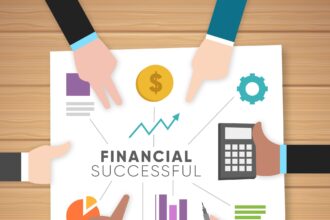
When saving posts on LinkedIn, you’re not just bookmarking content – you’re building a valuable resource for your professional growth. By tagging these posts, you can unlock their full potential.
Proper tagging enhances Natural Language Processing accuracy, aids in understanding text context, and develops advanced language models. It also helps you tap into collective knowledge, builds a personalized library, and alleviates information overload.
Effective tagging practice involves making tags personal and relevant, ensuring they are always positive and beneficial to those tagged. This encourages engagement, fosters meaningful connections, and sustains professional relationships.
Additionally, the algorithm favors posts with rapid response and interaction. To get the most out of your saved content, master the art of tagging by including tags that drive conversation and foster content sharing.
Learn how to do it efficiently, avoid common mistakes, and maximize post visibility to transform your content into a powerful knowledge base that fuels your success.
Importance of Post Tagging

Importance of Post Tagging
Post tagging, a crucial component of Natural Language Processing (NLP), plays a vital role in enhancing the accuracy and efficiency of text analysis.
This process involves assigning part-of-speech (POS) tags to each word in a sentence, enabling computers to understand the context and meaning of the text.
By identifying the grammatical category of each word, such as noun, verb, adjective, or adverb, post tagging facilitates the development of more sophisticated language models.
These models can then be applied in various applications, including sentiment analysis, information retrieval, and machine translation.
Benefits of Saved Posts
By saving posts on LinkedIn, you can accumulate a wealth of industry insights, news, and analysis from professionals like Julia Cheng, Sarah Doody, and Scott Stockwell that fuels your professional development and stays with you for future reference.
This personal repository of valuable content enables you to tap into the collective knowledge of professionals in your industry, providing a treasure trove of information to draw upon. By curating a collection of saved posts, you’re building a personalized library that simplifies access to expert opinions, trends, and strategies from UX, UI, and other design professionals. This, in turn, enhances your professional knowledge and helps you stay ahead of the curve.
Effective tagging of saved posts by categories like Figma tricks and UX metrics takes your organization to the next level, allowing you to efficiently manage and access the content that matters most to you. Regularly reviewing and updating your saved posts ensures that the information remains relevant and accessible, keeping you informed about the latest industry trends.
Step-by-Step Tagging Process

Step-by-Step Tagging Process
Tagging in a LinkedIn Post
- Click on ‘Start a post’ at the top of your LinkedIn homepage.
- Type the ‘@’ symbol followed by the name of the person or company you want to tag.
- A dropdown list will appear, click on the correct name.
- Continue writing your post and repeat this process for multiple tags.
Tagging in a LinkedIn Comment
- Click ‘Comment’ under someone else’s post.
- Type the ‘@’ symbol followed by the name of the person or company you want to tag.
- Select the correct name from the dropdown list.
Tagging in a LinkedIn Message
- Click ‘More’ on the post you want to share.
- Select ‘Send as Message’.
- Type ‘@’ followed by the name of the person you want to tag.
Tagging Companies on LinkedIn
- Navigate to your company page or profile.
- Start typing to tag someone on LinkedIn.
- Press the “@” symbol and type the name of the company.
- Check that the name turns bold in your post, indicating successful tagging.
Managing Saved Content Efficiently
Efficiently managing your saved LinkedIn content starts with a robust tagging system, empowering you to categorize and retrieve valuable posts with ease, which is a crucial aspect of Content Management.
By tagging your saved content with relevant semantic entities such as keywords, topics, projects, or interests, you can create a personalized system for organization and access. This allows you to quickly locate specific posts based on these entities, saving you time and effort.
With a large volume of saved posts, tagging becomes crucial for efficient management, as it helps to alleviate Information Overload. By assigning relevant keywords or themes to each post, you can categorize and prioritize your content, enabling you to focus on the most valuable information.
As a result, you’ll experience a significant boost in Productivity, as you can quickly retrieve the information you need, thereby enhancing your Overall User Experience.
Common Tagging Mistakes

Tagging your saved LinkedIn content without a clear strategy can lead to a disorganized mess, making it difficult to find what you need when you need it. To avoid this, it’s essential to be mindful of common tagging mistakes that can hinder your content organization efforts.
One common mistake is using generic tags like ‘important’ or ‘interesting’ that don’t provide specific context for your saved posts. These tags are too vague and won’t help you quickly locate relevant content when needed. Instead, strive for consistency in your tagging method, using a mix of broad and specific tags to cover different aspects of your saved posts such as hashtagging a post about a specific event or industry, or using relevant keywords.
Another mistake is over-tagging your posts, which can lead to confusion and dilute the effectiveness of your tagging system. You want to make it easy to find what you need, not create a cluttered mess. By being intentional with your tags, you’ll be able to efficiently locate and retrieve relevant content when needed.
Regularly review and update your tagged posts to maintain relevance and accuracy in your saved content organization. By avoiding these common tagging mistakes, you’ll be able to maximize the benefits of LinkedIn post tagging.
Maximizing Post Visibility
By avoiding common tagging mistakes, you’re now ready to unlock the full potential of LinkedIn post tagging, which can significantly boost the visibility of your saved content. When you tag your posts correctly, you’re increasing the chances of your connections and followers seeing them. This is because tagged posts are more likely to appear in search results and are categorized for easy retrieval. By adding relevant tags to your posts, you’re helping LinkedIn’s algorithm understand the context and relevance of your content, making it more discoverable.
As you continue to build your saved content library, proper tagging becomes crucial for maximizing post visibility. By grouping similar posts together using relevant tags, you’re creating a structured and organized library that’s easy to navigate. This not only helps you quickly reference and analyze your content but also makes it more accessible to your audience.
Content Library Organization

Content Library Organization
As you accumulate a vast collection of saved content, it’s essential to implement a robust organizational system to ensure you can quickly locate and leverage the right posts at the right time.
Audit and Categorize Existing Content
To achieve this, you need to audit your existing content assets, categorizing them based on topic, format, and audience. This will enable you to establish a clear taxonomy, folder structure, and naming conventions, streamlining content management in your library. Utilize tools for data analysis, content inventory, and version control to enhance organization and accessibility.
Implementation and Regular Updates
Regularly review and update your content to ensure accuracy, relevance, and accessibility within your library. This will help you save posts that are relevant to your audience and tag them accordingly. By doing so, you’ll enhance searchability and categorization through metadata, tags, and consistent file naming, making it easier to find and use the content you need.
Keys to Efficiency
- Establish Clear Taxonomy: Ensure content organization is logical and easily navigated.
- Utilize Data Analysis Tools: Leverage these tools to evaluate and maintain content quality.
- Maintain Version Control: Ensure only the most up-to-date content is accessible.
- Implement Content Governance: Ensure consistency in naming conventions, tagging, and metadata for efficient collaboration.
- Schedule Regular Reviews: Update and remove outdated content to maintain library relevance.
- Tag and Categorize Content: Use a structured folder system and descriptive file names to facilitate searches.
Measuring Tagging Success
To assess the effectiveness of your tagging strategy on LinkedIn, you’ll want to track key metrics that reveal the impact of your organized content library on engagement and visibility. One crucial metric to monitor is the number of tags added to your saved posts, which indicates the level of organization and categorization in your content library.
By analyzing the engagement rates on tagged posts compared to untagged posts, you’ll gain insights into whether your tagging strategy is driving more interactions.
Dive deeper into your tagging strategy by monitoring the frequency of tag usage across different topics or projects. This will help you identify trends and areas of focus, allowing you to refine your content library further.
Utilize LinkedIn Analytics to measure the visibility and interactions on tagged posts, providing valuable insights into the impact of your tagging efforts.
Finally, test keyword searches to assess the searchability and accessibility of your tagged posts, ensuring your tagging system is effective in helping you find the content you need quickly.
Frequently Asked Questions
Should You Tag People in Linkedin Posts?
Should you tag people in LinkedIn posts? Absolutely.
Tagging relevant individuals, such as industry thought leaders or potential clients, or companies, like startups or multinational corporations, can boost visibility, spark meaningful connections, and even lead to new opportunities, such as business partnerships or job offers.
It’s a great way to get on someone’s radar, especially if you’re looking to collaborate or build relationships with industry influencers, like Gary Vaynerchuk or Richard Branson, or potential clients, like decision-makers at Fortune 500 companies.
Just be strategic and avoid over-tagging to maintain authenticity and avoid coming across as insincere or spammy.
What Happens When Someone Tags You in a Linkedin Post?
When someone tags you in a LinkedIn post, you’ll receive a notification on LinkedIn.com and by email, indicating that you’ve been mentioned. This tag increases your visibility and engagement on the platform, making it easier for others to see your expertise.
Your profile link will be included in the post, comment, or photo, allowing viewers to navigate to your profile. You’ll have easy access to the shared content, and it’s a great way to connect with others, fostering potential networking opportunities.
How Do I Tag an Organization on Linkedin Posts?
Want to tag an organization on LinkedIn, a professional networking platform? It’s easy To do so, simply type the ‘@’ symbol followed by the company’s name, such as Microsoft or Google, in your post or comment.
This will notify the organization, potentially reaching their followers, increasing visibility and engagement. By tagging organizations in relevant posts, you can showcase collaborations, boost credibility, and foster networking opportunities.
What Is the Difference Between Tag and Mention on Linkedin?
So, you’re wondering what’s the difference between a tag and a mention on LinkedIn?
When you use hashtags with keywords or phrases, you’re helping others discover your content through search.
On the other hand, when you mention someone by tagging their profile or name, you’re directly involving them in the conversation, notifying them, and encouraging engagement.
Think of hashtags as categorizing your content and mentions as reaching out to specific people, fostering meaningful interactions and connection-building.
Conclusion
You’ve made it! Now that you’ve mastered the art of LinkedIn post tagging, efficiently utilizing these tools will elevate your content organization and maximize visibility.
Avoiding common mistakes and adhering to these steps ensures you’ll save time, stay on top of your saved content, and supercharge your LinkedIn experience through effective tagging practices.
These are described in the video ‘LinkedIn – Learn How to Properly Tag People in Your Posts’ and articles like ‘Tag, You’re ‘It’ LinkedIn Tagging Etiquette,’ ‘Tagging on LinkedIn: How to Boost Your Engagement,’ and ‘Tagging Connections in Your Post? Let’s Consider Some Best Practice.’






